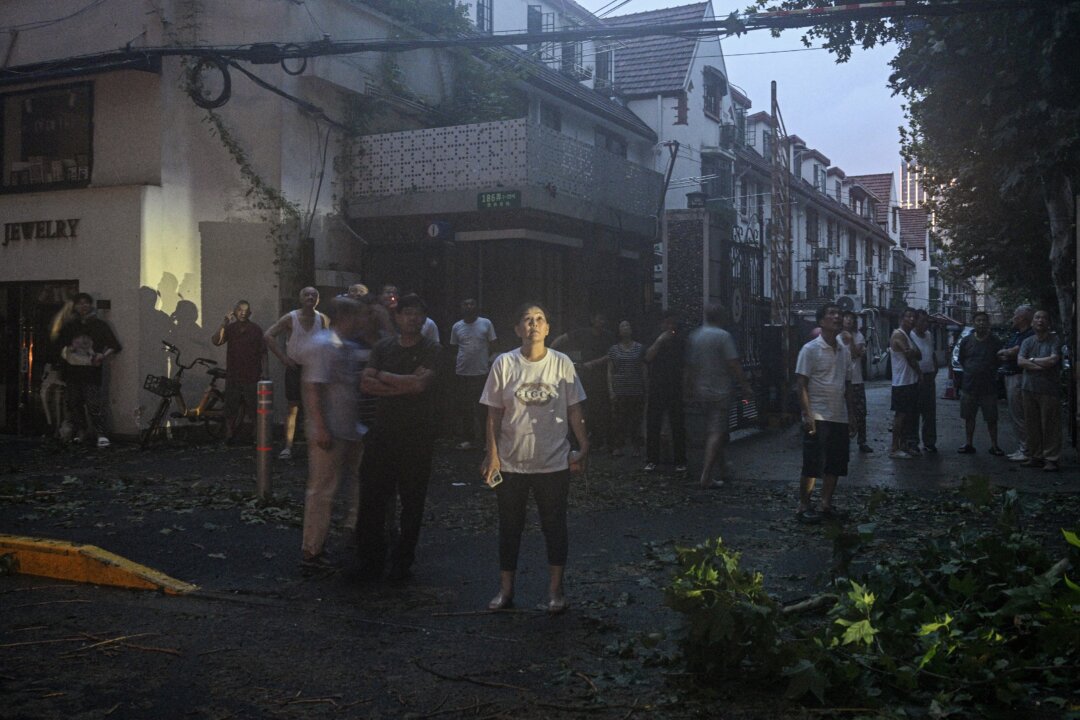One person was injured, power was lost in hundreds of homes, and hundreds of acres of farmland were flooded after the Category 1 storm hit.
Typhoon Bebinca hit Shanghai on Sept. 16, bringing the financial hub to a standstill.
Bebinca was a Category 1 storm when it made landfall at about 7:30 a.m. local time and is the most powerful tropical cyclone to reach the city since 1949, the year of the Chinese communist revolution, with top wind speeds of 94 miles per hour near its center.
At least one person was injured, and power was lost in hundreds of homes, according to authorities.
Ahead of the storm, the city canceled about 1,400 flights; recalled ships; closed schools, parks, businesses, and tourist destinations; and issued a typhoon red alert, warning residents of heavy winds and rain. More than 400,000 people were evacuated from at-risk areas, and weather authorities expected up to 12 inches of rain between Sept. 16 and Sept. 18.
By the afternoon of Sept. 16, more than 10,000 trees had fallen because of the storm, and many roads were closed to traffic or had speed restrictions in place. At least 132 acres of farmland were flooded.
More than 60,000 emergency responders and firefighters were on hand to assist in Shanghai.
The typhoon weakened as it moved inland, covering parts of Jiangsu, Anhui, and Zhejiang provinces as it passed Shanghai.
Shanghai is located on the coast, but most tropical storms tend to make landfall further south in China.
Earlier this month, a Category 4 storm hit Hainan, an island south of mainland China, and Hong Kong, as it swept through Southeast Asia.
Typhoon Yagi caused at least 74 deaths in Burma, where dozens more remain missing. Four deaths were reported in Hainan, at least 10 in Thailand, 20 in the Philippines, and more than 230 in Vietnam, with dozens still missing.
In the Philippines, the storm set off landslides that killed at least seven people, including a pregnant woman. Overflowing creeks also led to drowning deaths and one electrocution, according to officials. The water behind the Ipo Dam north of Manila rose to the point of nearly spilling over.
Landslides also caused devastation in Vietnam, where one village on the outskirts of Hanoi was flooded to the point of being almost entirely submerged, and another small village in the north was completely swept away.
Typhoon Yagi was the strongest typhoon to hit Vietnam in decades and caused the collapse of critical infrastructure. In one incident, a steel bridge over the Red River collapsed, sending cars, trucks, and motorbikes into the river.
The Associated Press and Reuters contributed to this report.

